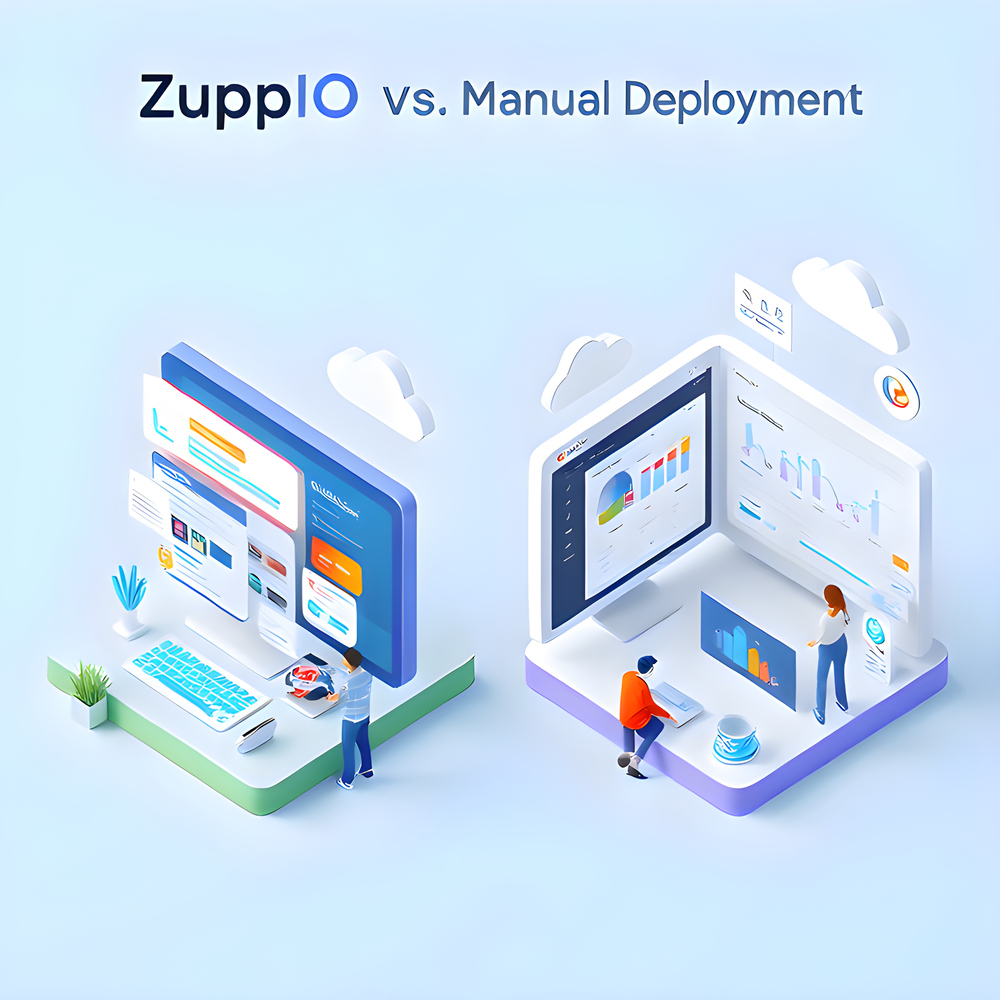ZuppIO vs Manual Deployment: A Performance Case Study

Introduction: Why Compare ZuppIO and Manual Processes
In the Salesforce ecosystem, releases often rely heavily on manual steps: user input, sequential actions, and copying settings. For scalable solutions—especially for ISV partners or large teams—this introduces serious risks.
This creates demand for automation. ZuppIO is one of the most technologically mature DevOps tools for Salesforce, offering centralized CI/CD orchestration. In this article, we compare manual deployment with ZuppIO based on a practical case study.
Methodology: How We Conducted the Comparison
To objectively evaluate both approaches, we used a typical release scenario: deploying a new module that includes:
- Updating custom objects
- Modifying page layouts
- Adding Apex classes
- Setting up permissions and Lightning Pages
- Post-install configuration via Execute Anonymous
We ran the scenario in two modes:
- Fully manual — using Change Sets and the Salesforce Setup UI
- Via ZuppIO — using an automated pipeline with configured jobs and validated steps
We measured:
- Total execution time
- Number of errors and manual interventions
- Scalability (multiple orgs)
- Rollback capability
- Repeatability of results
Results: Manual vs ZuppIO Deployment Comparison
Execution Time
- Manual: ~3–4 hours, including Change Set prep, switching between screens, and testing
- ZuppIO: ~30 minutes from job start to result verification
Manual Steps
- Manual: 10+ actions — from assembling Change Sets to post-deploy tasks
- ZuppIO: 2 clicks — launch and monitor via dashboard
Errors and Deviations
- Manual: 2 out of 3 runs had missing dependencies or merge conflicts
- ZuppIO: Automatically checks for missing dependencies and conflicts during execution; if critical issues are found, the process stops and logs the failure.
Rollback Capability
- Manual: Only manual reversion based on memory or documentation
- ZuppIO: Built-in snapshots and UI-based rollback
Scalability
- Manual: Repeats required for each org
- ZuppIO: Bulk deployment across multiple environments in a single job
Analysis: Where ZuppIO Delivers Clear Advantages
- Time Savings: Up to 70–80% reduction on typical release cycles
- Reduced Human Error: Critical for small or overloaded teams
- Unified Process: Reusable templates across orgs
- Traceability: Every step is saved and auditable
- Flexibility: GitHub integration, CLI support, and zip-based execution
Importantly, ZuppIO doesn’t remove the engineer — it transforms their role from executor to orchestrator.
Conclusion: Automation is the New Standard
ZuppIO proves that DevOps for Salesforce isn’t just theoretical — it’s a practical advantage. For the same result, you get:
- Faster releases
- Fewer errors
- Auditability and rollback control
Manual deployment might still work for small tasks or prototypes, but it doesn’t scale in modern CI/CD environments. For teams managing multiple orgs or products on AppExchange, automation through ZuppIO is no longer optional — it’s essential.